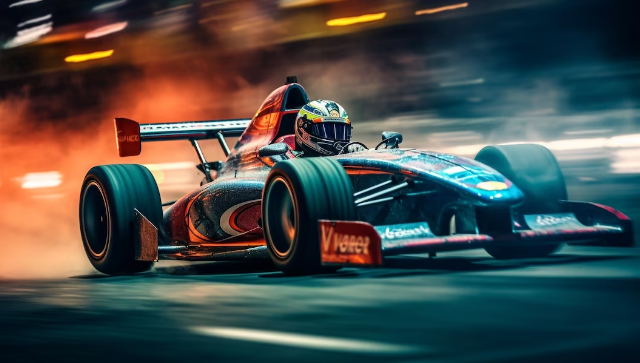Formula 1 has always been the epitome of motorsport, pushing boundaries both in terms of engineering prowess and driver skill. Yet, it’s the rules and regulations that guide this sport, ensuring that every race is not only competitive but also safe for all participants. With every season, F1 often finds itself at a crossroads, adapting to ever-evolving technology and the demands of fans and stakeholders. The recent changes in regulations have undoubtedly caused ripples in the race dynamics and the chase for the championship.
In this thrilling journey through the twists and turns of F1 rule changes, we’ll also take a pitstop at a related avenue. Those who aren’t just content watching the races but also love predicting the outcomes might be familiar with BetWinner app. This app is an exhilarating blend of sports enthusiasm and a knack for placing strategic bets.
Why Do Rules Change?
The beauty of Formula 1 lies not just in its speed but in its capacity for innovation. Rule changes are often:
-
Safety-driven: Protecting the drivers, teams, and spectators is of paramount importance. Over the decades, numerous modifications like the introduction of the Halo system have been implemented to enhance safety.
-
Competitiveness-focused: To ensure a level playing field and prevent a single team’s dominance, rules are periodically tweaked. This fosters tighter racing and more overtaking opportunities.
-
Environmentally considerate: As the world leans towards sustainability, F1 has not been left behind. Recent engine regulations and fuel use limits aim at making the sport greener.
The Impact of Recent Rule Changes
Aerodynamic Adjustments
The 2021 season brought significant alterations in the aerodynamic regulations. The idea was to reduce downforce, making overtaking easier and enhancing wheel-to-wheel racing. A simpler front wing, reduced barge boards, and a new floor design all played pivotal roles in changing the cars’ behavior on track.
Tire Management
Pirelli, the tire supplier for F1, often revises its compounds to suit the latest regulations and demands of the tracks. Changes in tire construction or compound can drastically affect a car’s performance and strategy during a race.
Budget Cap Introduction
The introduction of a budget cap means teams have to strategize not only on the track but also off it. This cap ensures that big teams with vast resources don’t overshadow the smaller ones, maintaining competitive balance throughout the grid.
The DAS System
Mercedes introduced the Dual Axis Steering (DAS) system in 2020, allowing drivers to adjust the toe angle of the front wheels. While it was deemed legal for 2020, the FIA banned it for 2021, showing how innovations can shake up the regulations.
The Championship Quest: A Closer Contest
With these rule changes, the fight for the championship has become more unpredictable. Traditional powerhouses like Mercedes and Red Bull find themselves battling it out with teams like McLaren and Ferrari more frequently. This unpredictability not only thrills fans but also makes platforms like the BetWinner app even more enticing for those who believe they can predict the outcome of races and championships.
Technological Innovations: The Unseen Game Changer
Beyond the overt rule changes, Formula 1 is a sport driven by technological advancements. These are often subtle, behind-the-scenes innovations that can redefine race strategies and championship outcomes.
Engine Evolution
With the hybrid era, teams are continuously pushing the boundaries of engine efficiency. The fusion of Internal Combustion Engines (ICE) with Energy Recovery Systems (ERS) has not only enhanced power output but also efficiency, making races more about strategic power deployment than mere speed.
Advanced Simulation
The use of advanced wind tunnel testing and computational fluid dynamics (CFD) simulations enables teams to predict on-track performance without even leaving the factory. This has led to rapid car developments throughout the season, making every race weekend a new puzzle for teams and drivers.
Data Analytics
Modern F1 cars are data hubs, collecting vast amounts of information every split second. Teams invest heavily in data analytics, decoding this information to optimize car setups, strategize pit stops, and even predict tire degradation rates. This silent technological warfare often differentiates the front runners from the mid-field, even if their cars seem nearly identical to the untrained eye.
Conclusion
Formula 1, as a sport, thrives on change. The recent shifts in the rulebook reflect the sport’s commitment to evolve, ensuring that the battle for supremacy remains fierce, both on and off the track. For fans, these changes mean more nail-biting finishes, unexpected podiums, and the sheer unpredictability that makes F1 the pinnacle of motorsport.
For an in-depth understanding of Formula 1’s history and regulations, check out this comprehensive article on Wikipedia.
FAQ:
Q: Why are F1 rules changed frequently?
A: Rule changes in F1 are primarily for safety, ensuring competitiveness, and aligning the sport with environmental considerations.
Q: Has the budget cap affected the performance of bigger teams?
A: The budget cap ensures a more level playing field. While bigger teams have to strategize more off-track, they still possess an edge in terms of experience and infrastructure.
Q: What was the main aim of the 2021 aerodynamic regulations?
A: The 2021 aerodynamic changes aimed at reducing downforce to encourage overtaking and provide closer racing.
Q: Is predicting race outcomes on platforms like BetWinner purely luck-based?
A: While there’s an element of unpredictability in sports, understanding the teams, drivers, and strategies can enhance the chances of making accurate predictions.
